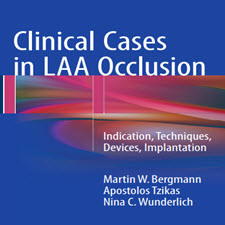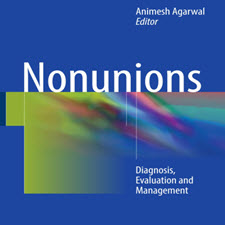Emergency Clinical Diagnosis
ABSTRACT
The demands on emergency departments are rising worldwide. Simultaneously, the scope of practice of emergency medicine continues to expand. This is fuelled by an ageing population, complex medical presentations, rising patient expectations, diffculties with access to primary care facilities, and the desire for second opinions in the case of diagnostic delay or failure in primary care settings. Diagnostic failure is the leading source of clinical complaints and of medico-legal litigation involving emergency departments. The emergency practitioner not only needs to be profcient in the evaluation of common highstakes conditions, but also has to be aware of malignant disease and rarer conditions that can present to the emergency department and facilitate their diagnosis and subsequent management. This ensures more effective communication with specialists receiving referrals. In particular, the new diagnosis of cancer is increasingly being made in the emergency setting. Once the correct diagnosis is made, it is recognised that treatment protocols and referral pathways can vary widely and that local guidance is more appropriate. Diagnostic accuracy, however, remains a universal common concern. This book aims to provide the emergency practitioner with diagnostic aide-memoires and checklists as part of the front-line diagnostic armamentarium.
INTRODUCTION
A good focused history is essential to the adequate assessment of chest pain. It is important to rapidly exclude potentially life-threatening causes of chest pain to avoid adverse clinical outcomes.This should be preceded by an ABCD (airway, breathing, circulation, disability) assessment. Once cardiac chest pain is determined to be likely, early risk stratifcation should be achieved in order to guide choice of further management. The PQRST history for chest pain provides a basic framework for history taking: • Provokes: deep breathing, coughing, movement, physical exertion, cold weather, emotional stress, heavy meal, sexual intercourse • Palliates: rest; position; food; antacids; over the counter or prescription drugs Quality: burning, stabbing, crushing, dull, aching, sharp, heaviness, tightness • Region: central, lateral; localization by the patient’s fnger(s) is useful to determine the site of pain • Radiation: back, neck, upper limb • Severity: graded from 1 to 10 • Timing: duration of symptoms; time of onset
چکیده
تقاضای بخش های اورژانس در سراسر جهان افزایش می یابد. همزمان، دامنه عمل طب اورژانس ادامه می یابد. این امر بوسیله جمعیت پیری، ارائه های پزشکی پیچیده، افزایش انتظارات بیمار، عدم دسترسی به امکانات مراقبت های اولیه و تمایل به نظرات دوم در مورد تاخیر تشخیصی یا شکست در تنظیمات مراقبت های اولیه مطرح می شود. نقص تشخیصی منبع اصلی شکایات بالینی و دادرسی پزشکی قانونی مربوط به بخش اورژانس است. متخصص اورژانس نه تنها باید در ارزیابی شرایط پرخطر، بلکه باید از بیماری های بدخیم و شرایط نادر تر که می تواند به بخش اورژانس ارائه کند و تشخیص و مدیریت پس از آن را تسهیل کند، آگاه است. این امر ارتباطات مؤثرتری را با متخصصانی که رفرنس دریافت می کنند، تضمین می کند. به طور خاص، تشخیص جدید سرطان به طور فزاینده در شرایط اضطراری ساخته شده است. هنگامی که تشخیص درست انجام می شود، شناخته شده است که پروتکل های درمان و مسیرهای ارجاع می تواند به طور گسترده ای متفاوت باشد و راهنمایی های محلی مناسب تر است. با این حال، دقت تشخیصی، یک نگرانی مشترک است. این کتاب با هدف ارائه مراقبت های اورژانسی به همراه یادآوری های کمک های تشخیصی و چک لیست ها به عنوان بخشی از خطوط تشخیصی خط مقدم است.
مقدمه
یک تاریخچه متمرکز خوب برای ارزیابی کافی از درد قفسه سینه ضروری است. مهم است که به سرعت سرایت علل بالقوه تهدید کننده زندگی درد قفسه سینه را برای جلوگیری از نتایج بالقوه بالقوه مواجه سازید. این باید قبل از یک بررسی ABCD (راه هوایی، تنفس، گردش خون، ناتوانی) باشد. هنگامی که درد قفسه سینه قلبی به احتمال زیاد تعیین می شود، به منظور هدایت انتخاب مدیریت بیشتر، باید فشرده سازی خطر ابتدایی به دست آید. تاریخچه PQRST برای درد قفسه سینه یک چارچوب اساسی برای تاریخ گرفتن را فراهم می آورد: • پریشانی: تنفس عمیق، سرفه، حرکت، اعمال جسمی، هوای سرد، استرس عاطفی، وعده های سنگین، مقاربت جنسی • Palliates: استراحت؛ موقعیت؛ غذا؛ آنتی اسیدها؛ بیش از مواد مخدر و یا داروهای تجویزی کیفیت: سوزش، stabbing، خرد کردن، کسل کننده، درد، شدید، سنگین، تنگی • منطقه: مرکزی، جانبی؛ موضع گیری توسط fnger (s) بیمار برای تعیین محل درد مفید است • تابش: پشت، گردن، اندام فوقانی • شدت: درجه بندی شده از 1 تا 10 • زمان: مدت علائم؛ زمان شروع.
Year: 2017
Publisher : SPRINGER
By : Ashis Banerjee
File Information: English Language/ 292 Page / size: 1.55 MB
سال : 1396
ناشر : SPRINGER
کاری از : Ashis Banerjee
اطلاعات فایل : زبان انگلیسی / 292 صفحه / حجم : MB 1.55


![Emergency Clinical..[taliem.ir]](https://taliem.ir/wp-content/uploads/Emergency-Clinical..taliem.ir_.jpg)
![Clinical Management of[taliem.ir] Clinical Management of[taliem.ir]](https://taliem.ir/wp-content/uploads/Clinical-Management-oftaliem.ir_.jpg)
![Clinical Approaches to[taliem.ir] Clinical Approaches to[taliem.ir]](https://taliem.ir/wp-content/uploads/Clinical-Approaches-totaliem.ir_.jpg)
![Chest.Drains.in.Daily.[taliem.ir] Chest.Drains.in.Daily.[taliem.ir]](https://taliem.ir/wp-content/uploads/Chest.Drains.in_.Daily_.taliem.ir_.jpg)
![Emergency Department…[taliem.ir] Emergency Department...[taliem.ir]](https://taliem.ir/wp-content/uploads/Emergency-Department...taliem.ir_.jpg)
![Diagnosis.and.Management.of.Breast.Tumors.A.Practical.[taliem.ir] Diagnosis.and.Management.of.Breast.Tumors.A.Practical.[taliem.ir]](https://taliem.ir/wp-content/uploads/Diagnosis.and_.Management.of_.Breast.Tumors.A.Practical.taliem.ir_.jpg)


![Clinical Features of PTSD[taliem.ir] Clinical Features of PTSD[taliem.ir]](https://taliem.ir/wp-content/uploads/Clinical-Features-of-PTSDtaliem.ir_.jpg)
![Development of Oral[taliem.ir]](https://taliem.ir/wp-content/uploads/Development-of-Oraltaliem.ir_-150x150.jpg)
![Emergency Department...[taliem.ir]](https://taliem.ir/wp-content/uploads/Emergency-Department...taliem.ir_-150x150.jpg)
دیدگاه خود را ثبت کنید
تمایل دارید در گفتگو شرکت کنید؟نظری بدهید!